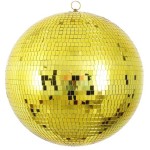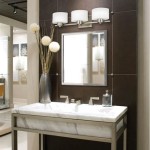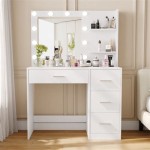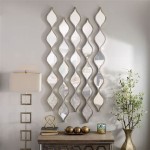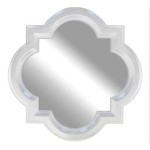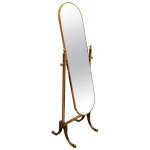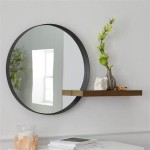Two-Sided Mirrors: Principles and Applications
Two-sided mirrors, also known as one-way mirrors or half-silvered mirrors, represent a fascinating application of optical principles. They create an illusion of transparency from one side while appearing reflective from the other. This seemingly paradoxical behavior stems from the precise application of a reflective coating to a glass surface.
Unlike standard mirrors which have a fully opaque reflective backing, two-sided mirrors utilize a thin metallic coating, often composed of silver or aluminum. This coating is applied in a very thin, even layer, allowing a portion of light to pass through while reflecting the remainder. The key to their functionality lies in the difference in lighting conditions between the two sides of the mirror.
The side with brighter lighting appears reflective. The abundance of light overwhelms the small amount of light passing through from the other side. The reflected light from this brighter side dominates, creating the appearance of a regular mirror. Conversely, the dimmer side allows for observation. The relatively low light levels on this side mean the light transmitted from the brighter side is more prominent, allowing individuals on the dimmer side to see through the mirror.
The effectiveness of a two-sided mirror is dependent on the relative light intensity difference between the two environments it separates. A significant difference in lighting is crucial for maintaining the illusion. If the lighting levels become similar on both sides, the mirror's one-way effect diminishes, and individuals on both sides can see through.
The reflective coating applied to two-sided mirrors is typically metallic, with silver and aluminum being common choices due to their high reflectivity. The thickness of this coating is meticulously controlled during the manufacturing process. A thicker coating increases reflectivity and reduces light transmission, while a thinner coating allows more light to pass through, making the observation effect more pronounced.
The manufacturing process for two-sided mirrors involves depositing the metallic coating onto a glass substrate. This can be achieved through various techniques, including vacuum deposition methods like sputtering or evaporation. These processes allow for precise control over the thickness and uniformity of the metallic layer, ensuring the desired optical properties are achieved.
Two-sided mirrors find applications in a variety of settings. In law enforcement and security, they are utilized in interrogation rooms and observation areas, allowing personnel to monitor individuals without being seen. This allows for unobtrusive observation and facilitates investigations.
In the field of psychology, two-sided mirrors are employed in research settings, particularly in studies involving observation of behavior. They allow researchers to gather data without directly influencing the subjects' behavior, leading to more natural and unbiased results.
Teleprompters, used by presenters and television personalities, also utilize two-sided mirrors. The text is projected onto the mirror, appearing superimposed onto the presenter's line of sight while remaining invisible to the audience. This enables the presenter to read the script while maintaining eye contact with the camera.
Architectural applications of two-sided mirrors include creating illusions of space and enhancing privacy. Strategically placed mirrors can make a room appear larger or provide a degree of visual separation while still allowing light to pass through.
Entertainment applications leverage two-sided mirrors for creating special effects, such as the Pepper's Ghost illusion, a technique that has been used in theater and magic shows for centuries to create ghostly apparitions.
Scientific research also benefits from the unique properties of two-sided mirrors. They are employed in optical instruments and experiments involving light manipulation and reflectivity measurements.
While offering numerous advantages, two-sided mirrors also raise ethical considerations, particularly regarding privacy. Their use in surveillance requires careful consideration and adherence to legal and ethical guidelines. Transparency and informed consent are paramount when utilizing two-sided mirrors in any context where observation is involved.
The effectiveness and functionality of two-sided mirrors are intrinsically linked to the lighting conditions surrounding them. Careful management of lighting differences is crucial to ensure the desired one-way observation effect is maintained. Any shift in lighting balance can compromise the mirror’s intended functionality.
Technological advancements continue to refine the manufacturing and application of two-sided mirrors. Research into new materials and coatings may lead to improved performance and expanded applications in various fields. The development of “smart” mirrors with adjustable reflectivity could further enhance their versatility and utility.

Tips For Identifying Whether Your Mirror Is Two Way Or Not Ledmyplace

How To Tell If A Mirror Is Two Way Or Not 8 Steps With Pictures

Glass Two Way Mirror In Stock Custom Sizes Worldwide

How To Detect A Two Way Mirror Fingernail Test

Two Way Mirror Mirrorworld

How To Tell If A Mirror Is Two Way Or Not 8 Steps With Pictures
How To Tell If A Mirror Is Two Way Or Not Quora

Acrylic Pmma 2 Way See Thru Mirror 3 0mm Thickness 118 12 Sizes Available

How To Tell If A Mirror Is Two Way Or Not 8 Steps With Pictures

How To Detect A Two Way Hotel Mirror Tips Ensure Your Privacy

